EuropeanSpaceAgency
Latest
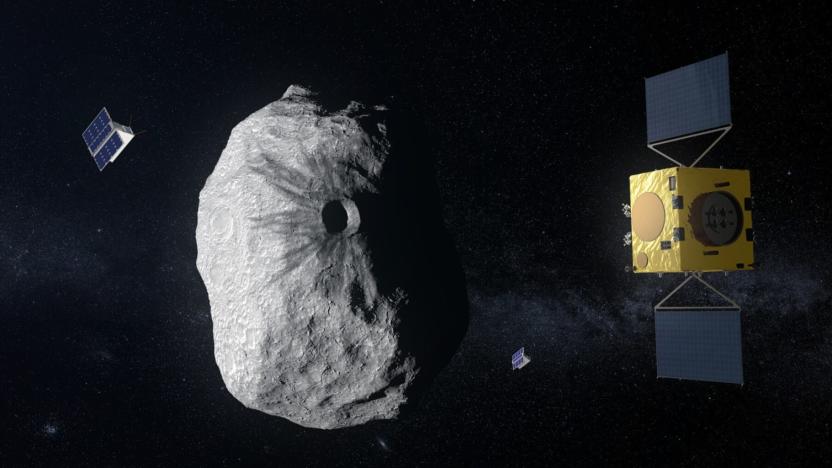
Europe's space agency approves the Hera anti-asteroid mission
European ministers in charge of the ESA space agency have approved Hera, a mission that will test whether deflection could save humanity from a rogue asteroid. During the $320 million mission, ESA and partner NASA will send a pair of spacecraft to a double-asteroid system called Didymos. NASA will first crash its DART probe into the smaller asteroid (Didymoon) at a speed of around 13,320 MPH, with the event recorded by an Italian cubesat called LICIACube. Hera will arrive later to map the impact crater and measure the asteroid's mass.
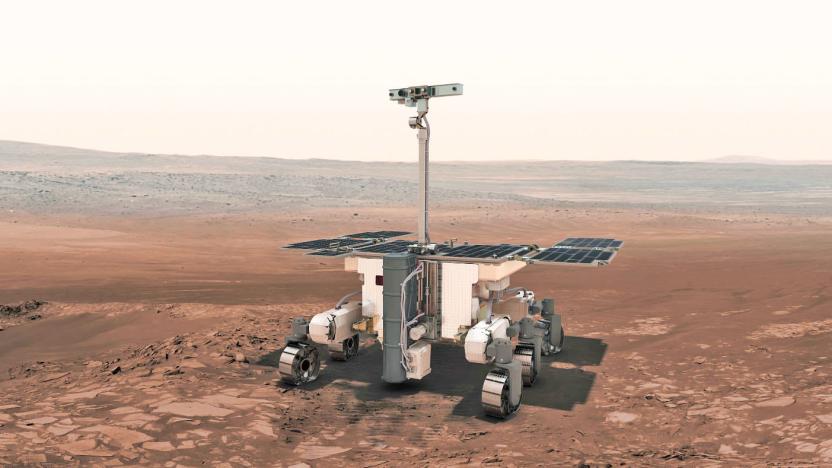
The ExoMars rover may search for life near the Red Planet's equator
Europe and Russia's ExoMars rover has been assigned its destination on the Red Planet. The robot explorer will almost certainly land on Oxia Planum -- a site rich in iron-magnesium clays near the equator -- say scientists from the Landing Site Selection Working Group (LSSWG) in Leicester, UK. They've been discussing touchdown options for around four years and -- with the blessings of the European and Russian space agencies -- this could be the spot. Unless, of course, they change tack and opt for the other site in contention: Mawrth Vallis, which lies just north of Oxia, reports the BBC.
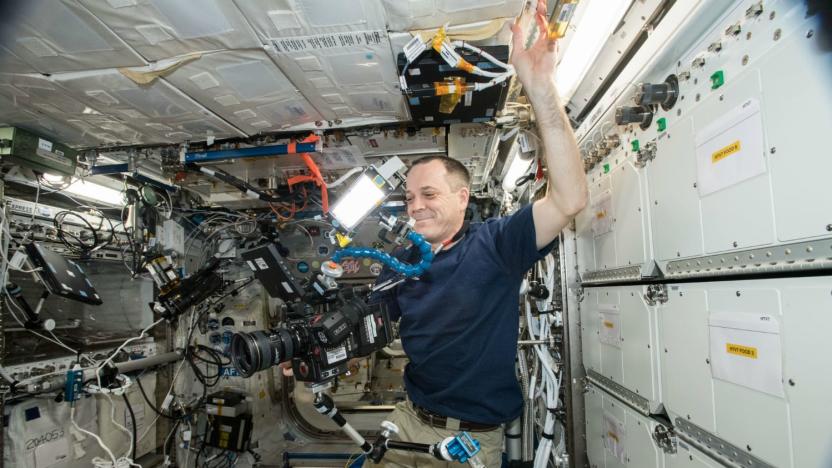
NASA and the ESA release first 8K video from space
NASA and the European Space Agency have teamed up on a new video about astronauts in the International Space Station. But this one is a little different than the videos you've watched in the past because it's the first 8K ultra high definition video delivered by the agencies, shot with a Helium 8K camera from RED.

BepiColombo orbiters take off for Mercury tonight
If you've ever wondered what's happening over on Mercury, you'll have an answer soon. Well, soon-ish. BepiColombo, a joint effort between the space agencies of Europe and Japan, will send off a spacecraft Friday night at about 9:45 PM ET with the destination set for the closest rock to the sun. Don't expect to hear much from the little adventurer for a while, though -- it won't reach Mercury's orbit until late 2025.
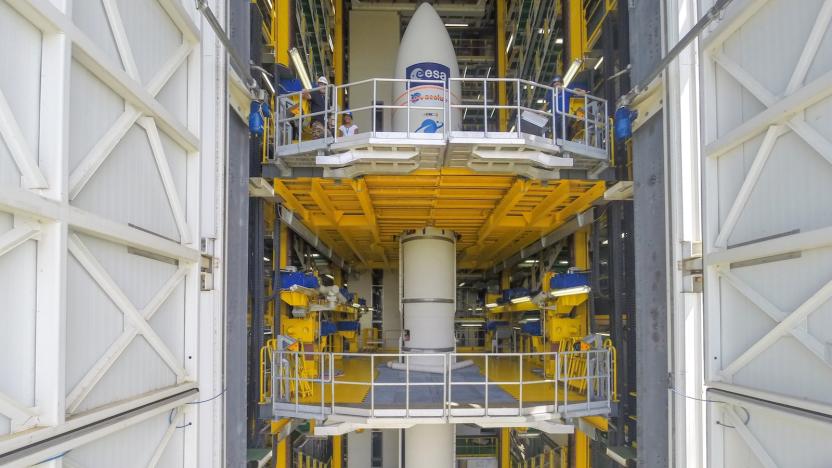
Watch the ESA launch its wind-mapping Aeolus satellite at 5PM ET
The European Space Agency is launching its Aeolus wind-mapping satellite today from the Guiana Space Center in Kourou, French Guiana. Once in orbit, Aeolus will measure winds from the Earth's surface up to the stratosphere using powerful lidar technology, and it will do so on a global scale. The data Aeolus collects will help improve weather forecasting and provide valuable information for climate change research.

Scientists may have found liquid water on Mars
Today, scientists announced that they have detected what could be a large reservoir of liquid water under the surface of Mars. The "lake" measures 20-km across and is located about 1.5 km below Mars's southern polar ice cap. An article about the discovery was published in the journal Science.

A Stephen Hawking musical tribute was beamed directly at a black hole
The European Space Agency had its own special way of marking a memorial service for astrophysicist Professor Stephen Hawking. At the same time his ashes were interred at Westminster Abbey in London, the ESA beamed music featuring Hawking's famously synthesized voice towards the closest-known black hole.
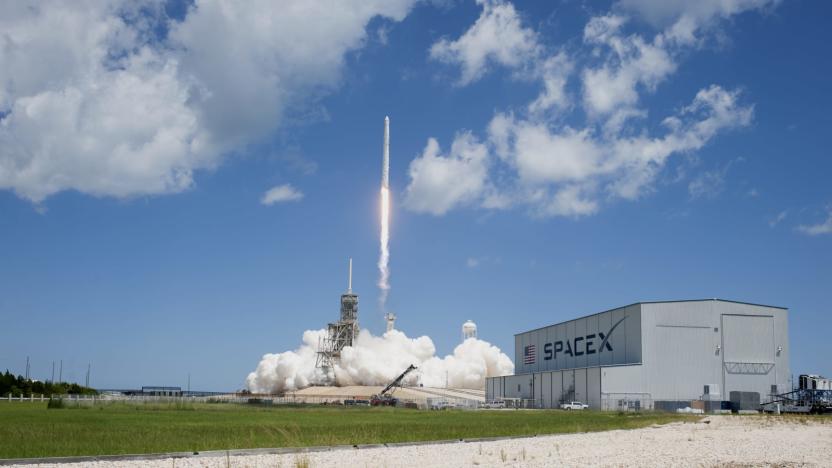
The UK's spaceport ambitions inch closer to reality
The UK government's goal to play host to the first spaceport in Europe is taking a baby step closer to fruition today. After being introduced just over a year ago as the Draft Spaceflight Bill, the rebranded Space Industry Bill is receiving royal assent to become part of UK law. While it sounds fancy, the nuts and bolts of it are kinda boring. The legislation covers necessities like spaceflight licensing, insurance requirements and safety commitments. Not a particularly exciting read then, but it does lay the regulatory groundwork that'll be essential for an operational spaceport. The government hasn't provided any update on when it hopes one will open, but previously it's said 2020 sounds doable.

Rosetta probe's last surprise: a photo of its landing site
Since it's been a year since Rosetta landed on the comet it orbited for a couple of years, you'd think the ESA had already decoded everything the vessel sent back before its demise. Apparently, the probe has one last surprise for all of us: a close-up photo of its final landing site. The team keeping an eye on the probe's OSIRIS camera thought they'd already downloaded all the images Rosetta took during its descent. Turns out the last photo's transmission got interrupted before it was done.

ESA throws its weight behind satellite-based 5G internet
The European Space Agency has joined forces with 16 European space companies to demonstrate and champion satellite-based 5G internet. They're calling their new initiative "Satellite for 5G," and they signed their agreement at the Paris Air and Space Show. The partners aim to deploy satellites for use in various trials to be performed over the next few years. By doing so, they hope to convince providers that satellite-based 5G can be better than terrestrial-based ones in many situations and to secure support from the European Commission. As Magali Vassiere, ESA's Director of Telecommunications, said in an interview embedded after the break, satellites can provide high-speed 5G connection even on mountains and islands far from cell towers. They could also ensure that you can reach first responders wherever you are on Earth.
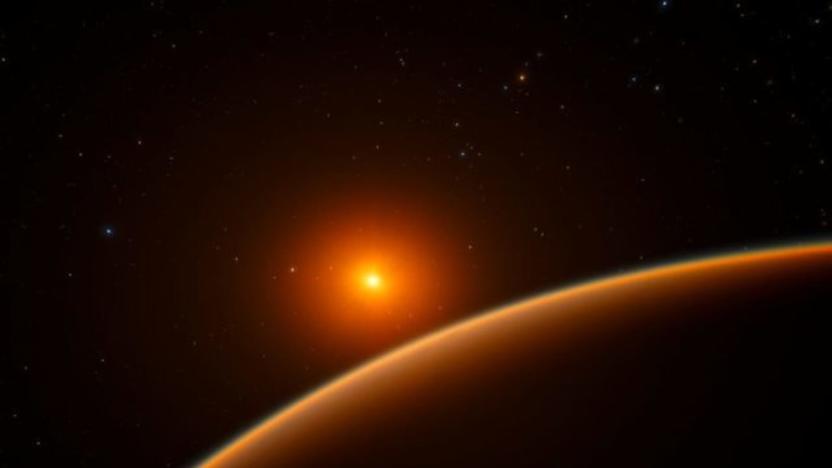
ESA’s search for Earth’s ‘twin’ starts in 2026
The European Space Agency (ESA) announced today that it is officially adopting the PLATO mission. PLATO, which stands for PLAnetary Transits and Oscillations of stars, is a planet-hunting project that will look for Earth twins -- planets just like our own.

Doomed Mars lander wasn't equipped for supersonic conditions
Last October, the European Space Agency (ESA) lost contact with the ExoMars Schiaparelli lander as it descended to Mars' surface. A few days later, the NASA Mars Reconnaissance Orbiter snapped a picture of Schiaparelli's landing site and discovered where the lander crashed into the planet's surface. Now, an ESA inquiry board has finally pinpointed the cause of Schiaparelli's landing failure: a computer glitch due to extreme descent conditions.
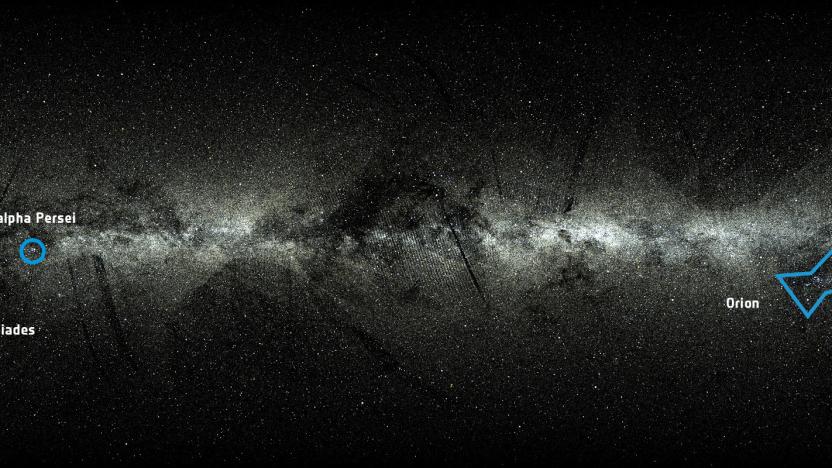
Watch the ESA trace 2 million stars' journey across the skies
Carl Sagan showed how some constellations would change over time as stars move through the universe in his TV series Cosmos. Now the European Space Agency has done something similar, but in a much bigger scale: it has released a video showing 2 million stars' journey across the skies from today until 5 million years into the future. The ESA used data provided by the the Gaia satellite and its one-billion-pixel camera, as well as data from the Hipparcos satellite that measured the positions of celestial objects back in the 1990s.
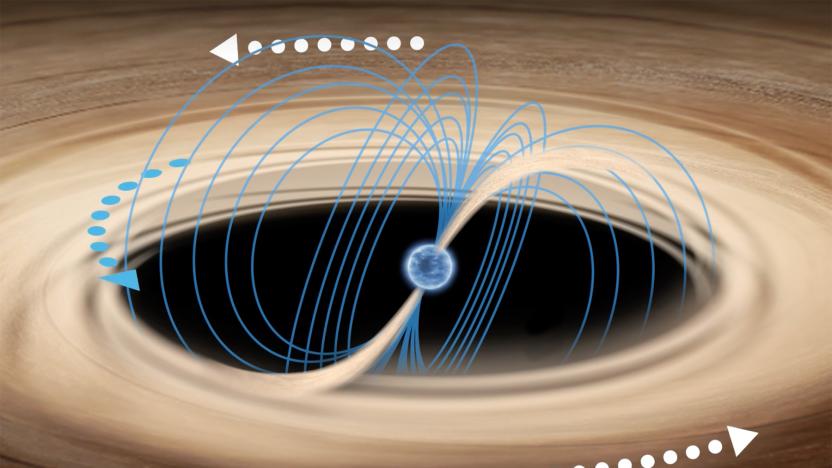
Magnetic fields could explain an 'erratic' neutron star
Scientists think they've discovered why an unusual star system is emitting "sudden, erratic and extremely intense" bursts of X-rays. Using three different space telescopes, the team set out to investigate "Rapid Burster," a binary system first discovered in the 1970s, in 2015. It contains a small star and a "neutron star," the term given to collapsed cores of formerly giant stars. Normally, this setup would produce "type-I" bursts, as the dense neutron star strips the gas of its younger neighbor. The Rapid Burster does this too, but curiously it also exhibits rarer, high energy "type-II" blasts.

British astronaut Tim Peake will return to the ISS
Tim Peake's adventures in space are far from over. At the Science Museum in London, the British astronaut announced this morning that he'll be returning to the International Space Station (ISS). There, like before, he'll be tasked with conducting new scientific research. Peake will be working with the European Space Agency (ESA), the same organisation that handled his original training and Prinicipia mission. The timing of his trip is unclear, however -- the UK government has merely said it will be "confirmed by the ESA in line with normal mission selection protocol." NASA currently has four ISS-bound launches in its diary, ending in October.

The Earth's core has a 'jet stream' of molten iron
You know jet streams as fast-flowing air currents in the atmosphere that can help predict temperature and help planes fly faster. According to data sent back by a trio of ESA satellites called Swarm, though, there's also a jet stream deep beneath our planet's surface, and it's made of molten iron. A team of European scientists have discovered the jet stream in the Earth's outer core that's located 1,900 miles underneath its crust. It moves at 25 miles per year, three times faster than the speed of the other layers in the outer core and a thousand times faster than our planet's tectonic plates.
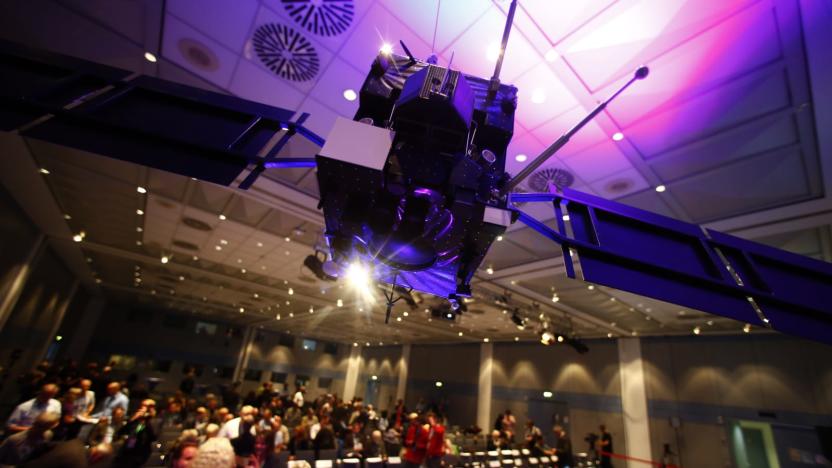
EU and ESA sign deal to keep ahead of global space competition
The European Space Agency has lined up several projects in the next few years, from its wind satellite aiming to go up in 2017 to a 2020 ExoMars expedition to follow up on the missing Schiaparelli probe that likely botched its landing last week. The group pursues mostly neutral research and development missions with loose ties to the European Union, but both groups signed an agreement today outlining future ambitions and plans to protect and enrich mutual interests. The Space Strategy for Europe declaration is a mix of commercial coverage and deployment of defensive assets -- aspirations to keep the continent's governments and industry competitive in space technology.

A tiny space pebble just put a huge dent in an ESA satellite
The European Space Agency's Copernicus Sentinel-1A satellite has new 40cm dent on one of its solar wings -- and it was caused by a tiny millimetre-size piece of space debris. The impact was discovered with the Sentinal-1A reported a slight power reduction last month. Onboard cameras quickly found the micrometeoroid impact, pictured above. Don't worry, the ESA says the satellite is fine, but the impact serves as a reminder: at orbital velocity, tiny objects can cause major damage.

The European Space Agency will land on Mars in October
Nearly 13 years after the British spacecraft Beagle 2 went missing on Mars, the European Space Agency's Schiaparelli module will touch down on the red planet -- assuming everything goes according to plan, that is. The module, which launched with the ExoMars Trace Gas Orbiter in March, will serve primarily as a test bed for the descent and landing systems and is expected reach the surface on October 19th.

ESA plans to study the wind by shooting lasers from space
The European Space Agency plans to send two potent Aladin lasers into space next year, both aimed at studying the wind. It's part of the ESA's Living Planet program aimed at better understanding hugely influential natural phenomena, like magnetism and wind. This time, it's concerned with the latter.











